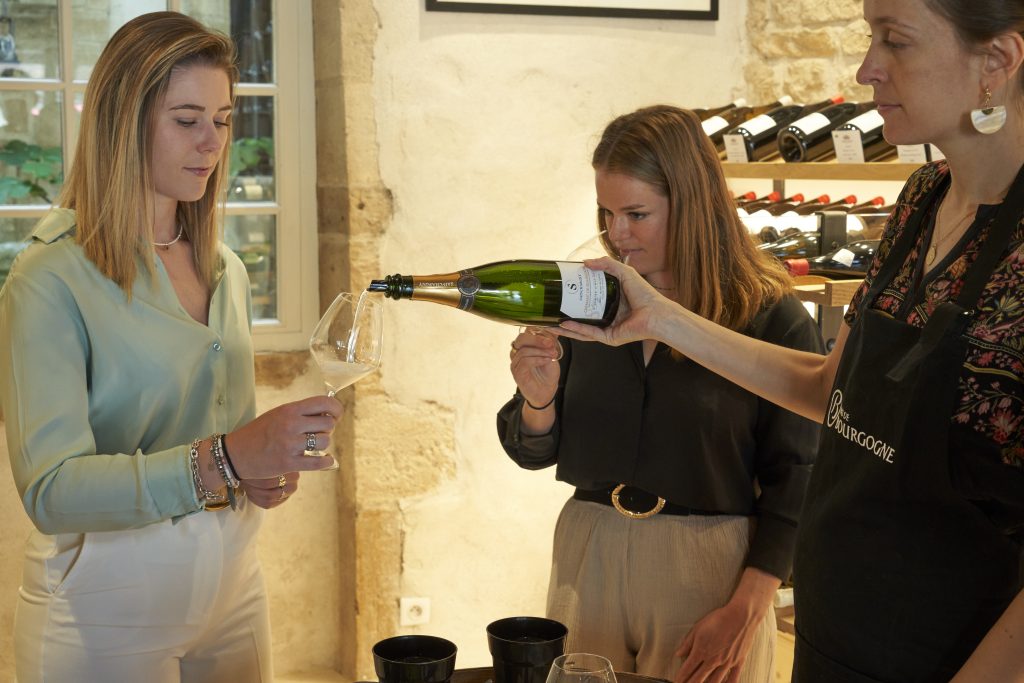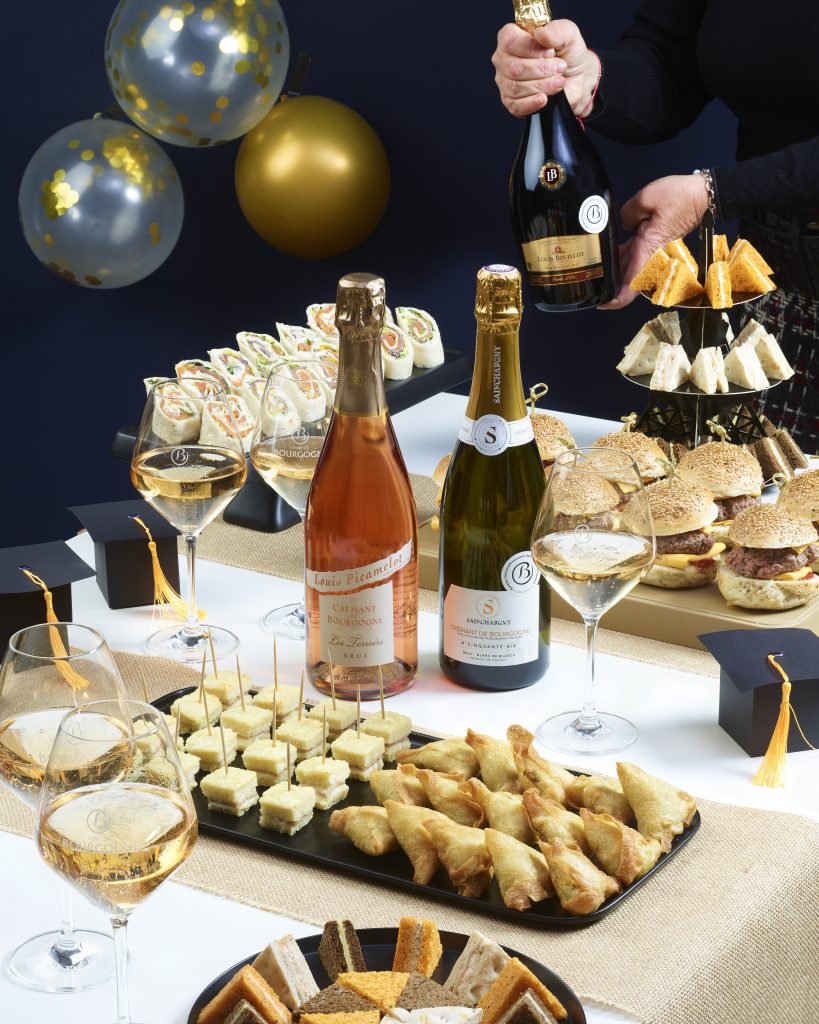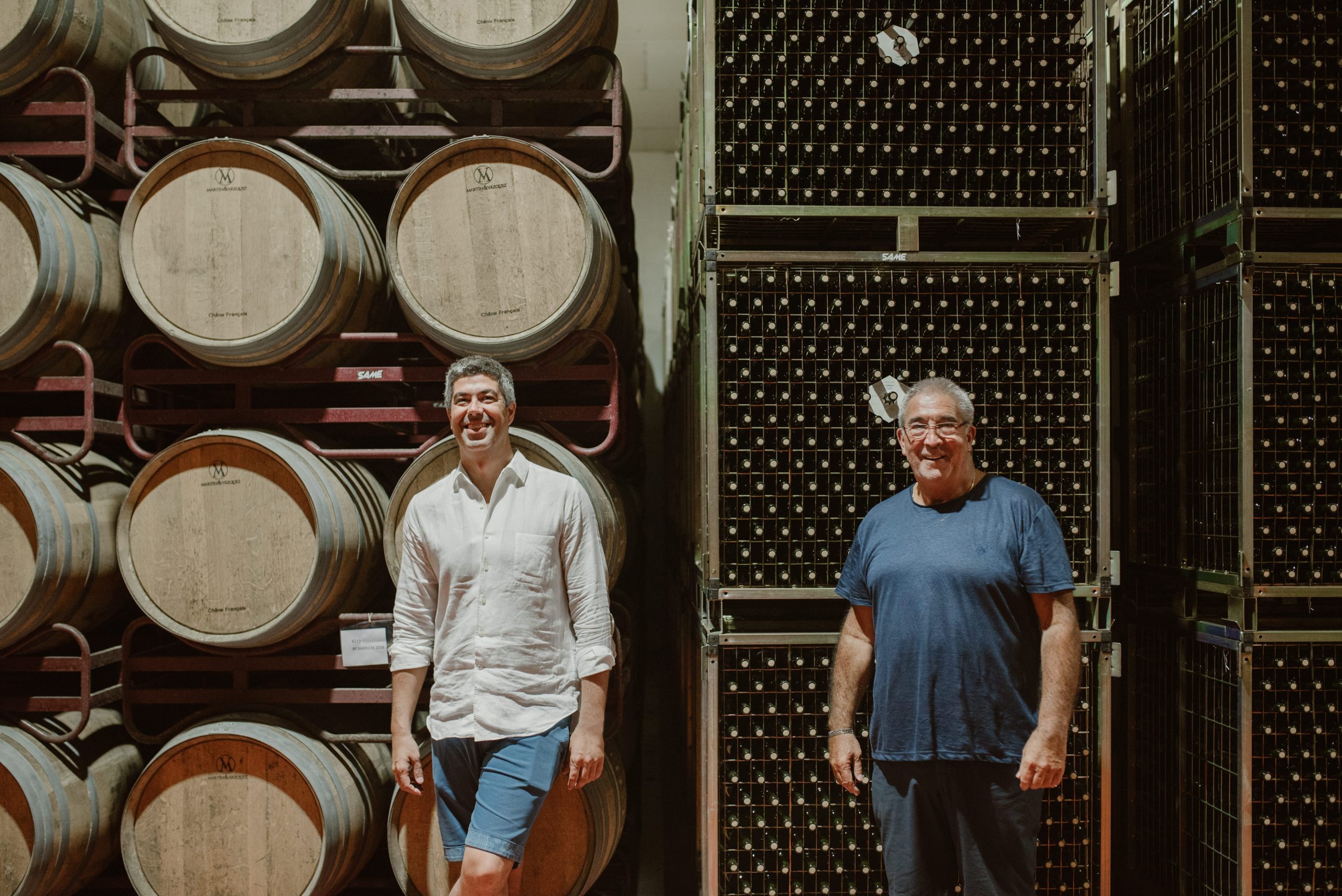Crémant de Bourgogne: a sparkling performance
Attention to detail and an ever more diverse array of wine styles are winning over new fans for Crémant de Bourgogne from all around the world.

The diversity and exceptional quality of Crémant de Bourgogne helps it to stand out among the pantheon of the world’s sparkling wines. Born from the soils that have given the world some of its most prestigious and coveted wines, Crémant de Bourgogne has carved out its own niche within the star-studded Bourgogne galaxy.
The unique terroir is key to giving Crémant de Bourgogne balance, complexity and refinement, as well as the acidty that supports the bubbles and allows for great ageing potential, but it also benefits from some of the highest production conditions.
Whole clusters are harvested by hand, using only perforated crates to transport the wine (to ensure the grapes are not damaged in transit to the winery), while a limit on pressing – 150kg of grapes per 100 litres of wine – is used to maintain the high quality of the juice, while preserving its acidity. This year, for example, historic Rully-based crémant producer Maison Louis Picamelot acquired a second, larger press “not to increase volume, but to allow for longer pressing cycles, from three hours to four-and-a-half hours,” owner Philippe Chautard said.
Juice fractioning and ageing on lees prove crucial to crafting a crémant with a distinctive and highly recognisable expression. Tasting during blending provides not so much a technical assessment, but rather a second “qualitative sorting” which enables the producer to determine which wines will be used for each of its cuvées, according to Sylvain Martinand, MD of cooperative Les Caves Bailly Lapierre. Later blind tastings of the wines determine the dosage for each cuvée, followed by a resting period after disgorgement.
Appellation regulations state that the base wine must be aged on fine lees for a minimum of nine months, and for up to 12 months before bottling, although many exceed these requirements. A small selection of producers follows the regulations for Eminent classification (a minimum two years ageing on lees) or Grand Eminent classification (a minimum three years ageing on lees), while many continue to mature their finest cuvées for extended periods in bottle, up to 10 years.

Traditionally, much of the variety of the wines in the Crémant de Bourgogne appellation has come from the grape varieties that can be used in Bourgogne– white varieties including Chardonnay, Aligoté, Melon de Bourgogne, Pinot Blanc and Sacy are made into Crémant de Bourgogne blancs de blancs, while the blancs de noirs are produced from Gamay, Pinot Noir and Pinot Gris. Both red and white varieties are used to produce Crémant de Bourgogne blanc et rosé.
But it is Pinot Noir and Chardonnay that Bourgogne wines are best known for, and the increasing focus on cuvées produced from a single grape variety plays to this strength. Increasingly, producers are offering greater choice and depth by focusing on different ways to reflect the region’s diversity – both through monocépage cuvées and by upping the focus on parcel selection and the production of a single-vineyard cuvées that reflect the specificity of Bourgogne’s rich terroir.
Louis Picamelot, for example, has taken the decision to phase out some of its historic gastronomic blended cuvées, which were first created 40 years ago, in order to concentrate on its four single-vineyard Crémant de Bourgogne: Les Reipes, En Chazot, En Espoutières and Clos Eudes III, although it will continue to produce its blended ‘tribute wines’, such as Cuvée 90 ans and Heritage Cuvée 1926.
Partner Content
Dosage levels
Other producers concentrate on creating different expressions of Crémant de Bourgogne according to dosage levels (brut nature, extra brut, brut, extra-sec, sec and demi-sec). Thus the team at Les Caves Bailly produces a series of cuvées: an extra brut Pinot Noir, an extra dry rosé and a demi-sec Pinot Noir, as well as a no-dosage cuvée called L’Authentique – a Crémant de Bourgogne “without a safety net”, Martinand says, that is testament to the winemakers’ skill and virtuosity. “These dosages allow us to obtain Crémant de Bourgogne with different expressions,” he explains.

The team is also launching a partially barrel-aged Crémant de Bourgogne, L’Inattendu, and a heritage cuvée, Synecdoque 1 – a wine composed from 36 different vintages, “providing a bridge between the past and present”, Martinand says, to celebrate the 50th anniversary of the Crémant de Bourgogne appellation. Producers “do not wish to be a copy of the Champagne spirit – blending of terroirs, grape varieties and vintages”, Chautard of Louis Picamelot explains. “We are, above all, wines of Bourgogne and, like all Bourgogne wines, the vintage reflects the harvest year – each vintage brings its differences, its nuances.
“The terroir wines we produce are of great quality, but cost more to produce than plain sparkling wines – however, many of our clients swear that their quality-price-pleasure ratio is excellent.”
The enormous potential and high quality of Crémant de Bourgogne is starting to gain traction in key markets such as the UK, Japan and US, where the sparkling wine culture is well developed and Bourgogne wines are highly sought-after. The UK, for example, is already one of the region’s largest consumers, as well as one of the top consumers of Champagne and sparkling wine and, since 2015, there has been strong growth of Crémant de Bourgogne in the UK. Volume sales have grown eight-fold, while value sales have grown by 9.5 times and well-regarded retailers such as Waitrose and Majestic have reported growing demand for Crémant.
This year is expected to set a new sales record in the UK: the year to August 2024 saw volume sales grew 6.22% compared to the previous year, to 555,193 bottles, while value sales in the same period increased 8.35% to €2.92 million.
Overall, international sales are also continuing to rise, with over 10m bottles of Crémant de Bourgogne exported annually, nearing 50% of the appellation’s total volumes. And, with Crémant de Bourgogne becoming more and more premium, it will continue to meet the growing international demand for higher-quality sparkling wines that satisfy discerning customers.
To learn more, visit www.bourgogne-wines.com.
Related news
Castel Group leadership coup escalates
For the twelfth day of Christmas...
Zuccardi Valle de Uco: textured, unique and revolutionary wines




